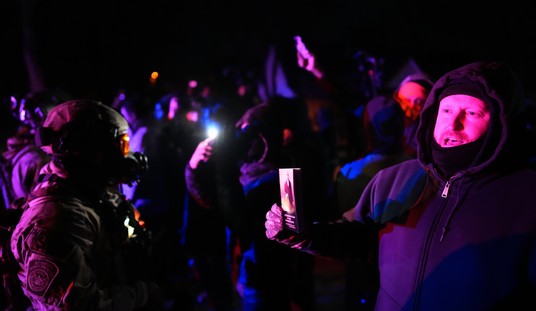There once was a saying — “Watch your language.” That directive still exists, but it means something considerably different these days.
For those not in the know, the Associated Press Stylebook has long served as a writing guide for news organizations. It releases periodic updates, and new instructions aim to tackle gender identity.
According to the Transgender Coverage Topical Guide, sex is not a physical reality observed at birth. Rather, someone comes up with an idea; they then challenge the baby to meet it for life:
A person’s sex and gender are usually assigned at birth by parents or attendants and can turn out to be inaccurate.
Gender, the manual insists, isn’t limited to men and women. This, of course, is correct: “Gender” is a recent invention of man. Hence, cake gender and bird gender.
Should everyone subscribe to gender’s all-new notion? It seems yes:
Experts say gender is a spectrum, not a binary structure consisting of only men and women, that can vary among societies and can change over time.
Here’s more from National Review,
The guide encourages writers to refer to subjects according to their preferred gender identity. The guide condemns ‘deadnaming,’ or referring to a transgender person’s previous name, because that “can be akin to using a slur and can cause feelings of gender dysphoria to resurface.
If a male identifies as female, that makes a woman. And writers should get to the point:
The guide explains that the word “identify” can be useful, but alternative phrasing “like ‘is a woman’ is more to the point than ‘identifies as a woman.’”
Additional concision:
The guide…advises writers to “avoid terms like ‘biological male,’ which opponents of transgender rights sometimes use to oversimplify sex and gender, is often misleading shorthand for ‘assigned male at birth,’ and is redundant because sex is inherently biological.”
As for drugs and surgeries aimed at physically affixing someone closer to their preferred presentation, the Stylebook calls such “gender-affirming care” and “gender-confirmation procedures.” Employment “can improve psychological well-being and reduce suicidal behavior” (see a contrary claim here).
The AP points out that the World Professional Association for Transgender Health “recently lowered its recommended minimum age for starting gender transition treatment, including ‘sex hormones’ and surgeries. It says hormones can be started at age 14 and some surgeries at 15 or 17.”
Conservatives, suggests the Stylebook, have been aiming weapons at those vulnerable youth:
Starting in 2020, conservative-leaning U.S. state legislatures began considering a wave of bills aimed at transgender youths. Many political observers assert that the legislation is being used to motivate voters by falsely framing children as under threat.”
And sex-separate sports are sinister:
In the following two years, more than a dozen states passed laws banning transgender athletes from certain sports teams. Opponents say that the measures unfairly target an already marginalized community, and that rules and monitoring in individual leagues and conferences render such legislation unnecessary.
Do males have an athletic advantage over females? It doesn’t sound like it:
Transgender athletes’ backers argue, among other things, that individuals are different, that sweeping restrictions overblow the prevalence of the issue, and that it’s not possible to know with certainty what gives any particular athlete, transgender or cisgender, a competitive edge.
And what is a woman?
The inclusive term ‘pregnant people’ is preferred when describing people who are pregnant. It takes into account minors, transgender men and nonbinary people. Aim to use the phrase ‘pregnant women’ only when it’s known everyone the term applies to identifies as a woman.
The AP is gospel to many news agencies. So if you thought a fair number of publications were calling to “pregnant people” and “sex assigned at birth,” expect that number to substantially rise.
Language is rapidly transforming. As we continue down the written word’s just-paved woke road, things are sure to get increasingly sophisticated. What if you’re writing about multiple people with different neopronouns and gender identities? A story on reproduction may end up as, “Jane had (f)are sperm count checked, while Dick had her eggs assessed. But George said ze wasn’t why Bob couldn’t impregnate xyrs, because ve had innitself been injured playing women’s soccer. Meanwhile, concerning Demon, Ruth, xenogender Xena, Mystery and birthing person Paul, it was an issue of timing for beeself, perself, xemself, eirself, and bunself. And poor Paul — the man’s had a perpetual period.”
As the AP Stylebook catches up with woke culture, professional news coverage will have an interesting style, indeed.
-ALEX
See more content from me:
A Clinic Right on Campus: California Eyes Turning Over a High School to Planned Parenthood
Comedy Is Dead: Theater Cancels Dave Chappelle Show Because It’s a ‘Safe Space’
Professor Insists Anti-Cheating Rules Aren’t Fair to ‘Black and Latinx’ Students
Find all my RedState work here.
Thank you for reading! Please sound off in the Comments section below.













Join the conversation as a VIP Member